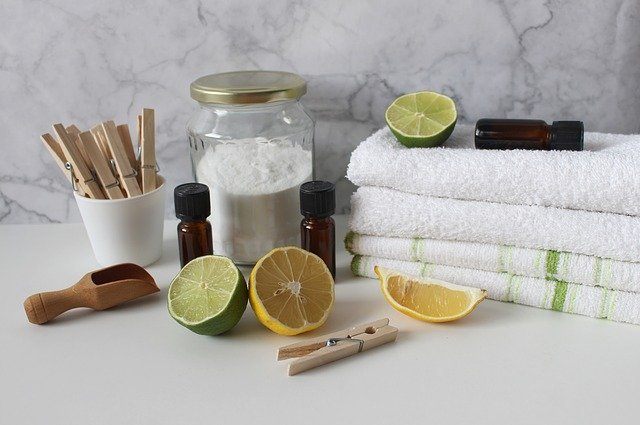How To Clean Mold Out Of A Backpack (Step-By-Step Guide)
Backpacks are built to support us as we move through life. However, if not cared for correctly, they can have mold and mildew build-up that damages the backpack over time. These harmful spores eat organic material and can lead to health issues if not treated.
Looking to learn how to clean mold out of a backpack? We have plenty of tips and tricks down below.
Common Causes of Mold In Your Backpack

What Can Get Rid of Mold In Your Backpack?
UV Radiation
While some recommend turning your backpack inside out and leaving it to hang in the sun, we would suggest being cautious. While it is true that UV rays can kill bacteria, they can also damage certain materials that are used in backpacks. To avoid damage, we recommend only leaving your backpack in the sun for a maximum of 24 hours and bringing it inside at night to avoid dampness and dew.
Vinegar Solution
White vinegar has been a pantry cleaning staple for years, and it is easy to see why. It is an excellent alternative to cleaning chemicals while being affordable and easily accessible. Mixing white vinegar with water can create a handy backpack cleaning solution.
Lemon Juice And Salt
Using a combination of lemon juice and salt to create a paste can make tackling mold a little easier. By combining these two, you get an acidic and abrasive mixture that can take on and remove spores from your backpack.
Baking soda
Baking soda is another powder that can help tackle dampness and mildew. By leaving a layer of it at the bottom of your bag for 24 hours, you can kill bacteria overnight and keep dampness to a minimum. It can also be mixed into a paste with water to create an abrasive mold solution.
Laundry detergent
It is possible that, after trying some of the solutions above, that you can wash your backpack in anti-mold detergent. There are specialist brands of detergent that can help kill mold and bacteria. If you want to try this, we recommend either soaking and scrubbing your backpack in hot water and detergent or by throwing it in a gentle wash with the detergent.

How To Clean Mold Out Of Different Backpacks
Before You Begin
How you tackle your mold and mildew issue can depend on the material your backpack is made of. Before getting started, there are a few steps that you must follow before beginning the material-focused cleaning and drying anti-mildew steps:
1. Nylon Backpack
Materials Needed:
- 1Once the backpack has been turned inside out and shaken, gently brush the mold spots with the bristled brush.
- 2Hang the bag outside in the sun for a maximum of 24 hours. When night falls, bring the bag inside to avoid morning dew before hanging it back up.
- 3Soak the bag in cold water.
- 4Fill the container with warm water and detergent mixture.
- 5Scrub the backpack in the warm, clean water.
- 6Blot the mold stains with color-safe bleach or a mixture of lemon juice and salt.
- 7Hang the backpack to dry for 24 hours.
2. Fabric Backpack
There are two methods to removing mildew and mold from a fabric backpack.
Vinegar
Materials:
- 1Dampen the rag with vinegar.
- 2Scrub the mold patches until they are gone.
- 3Rinse the bag with clean water and hang it to dry in the sun for a maximum of 24 hours.
Baking soda
Materials Needed:
- 1Hang the inside-out bag in the sun to dry.
- 2Turn it the right way around.
- 3Fill the bottom of the backpack with a ½ cup of baking soda.
- 4Zip the bag closed and leave it overnight.
- 5Use a damp cloth to scrub the baking soda into the moldy areas until they are gone.
- 6Dump out the excess baking soda.
- 7Soak the bag in water or wash it on a gentle cycle.
- 8Let the bag air dry completely.
3. Leather Backpack
Materials Needed:
- 1Soak the wool or cloth with a water and vinegar/lemon juice/denatured alcohol solution.
- 2Gently scrub the spots with visible mold. When doing this, be sure that the cloth is just damp, not soaked, and that you are gentle with your leather backpack.
- 3Pour a half cup of baking soda into the bag.
- 4Zip it closed and leave it overnight.
- 5Dump out the excess soda.
- 6Hang your bag out to dry while inside-out.

How To Protect Your Backpack From Mold (Tips For Prevention)
Prevention is key when it comes to protecting your backpack from mold and mildew. Some key tips to follow include:
People Also Ask (FAQs)
What laundry detergent kills mold?
There are a few laundry detergents that will clean your backpack and tackle mold and mildew. Some examples include Oxiclean and Clorox; read the label of your chosen detergent carefully before purchase to ensure it does tackle mold.
Does mildew also grow on backpacks?
Mold and mildew can grow on any backpack when under the right conditions. High temperatures, high humidity, and dirty backpacks in dark spaces make a perfect environment for harmful contaminants to spread.
Conclusion
While prevention is key to protecting your backpack, there are ways to clean mold and mildew if it is too late. If none of the tips above help, we recommend taking your backpack to a professional mold remover or cleaner for help.
